Can You Help Customers Efficiently?
A scenario-based eLearning experience to help customer service agents improve customer satisfaction rates.
Can You Help Customers Efficiently?
A scenario-based eLearning experience to help customer service agents improve customer satisfaction rates.
Audience: Customer Service Agents.
Responsibilities: Elearning Development, Visual Design, Storyboard, and Mockups.
Tools Used: Articulate Storyline, Adobe XD, and Adobe Photoshop.

Audience: Customer Service Agents.
Responsibilities: Elearning Development, Visual Design, Storyboard, and Mockups.
Tools Used: Articulate Storyline, Adobe XD, and Adobe Photoshop.

Overview:
I have a vast experience in customer service and technical support. When I landed my first CS job, it was a bit challenging for me to fully understand the company’s policy and transform an uncomfortable scenario into a positive experience for the client. It was not until I handled real-life cases that my customer service skills reached a proficient level, making me wonder what the story would have been if I had a little help from a scenario-based eLearning experience.
Thus, now that I have valuable knowledge in Instructional Design and multimedia principles, I imagined an eLearning solution for customer service specialists to understand realistic work situations through a dynamic, engaging and professional eLearning experience.
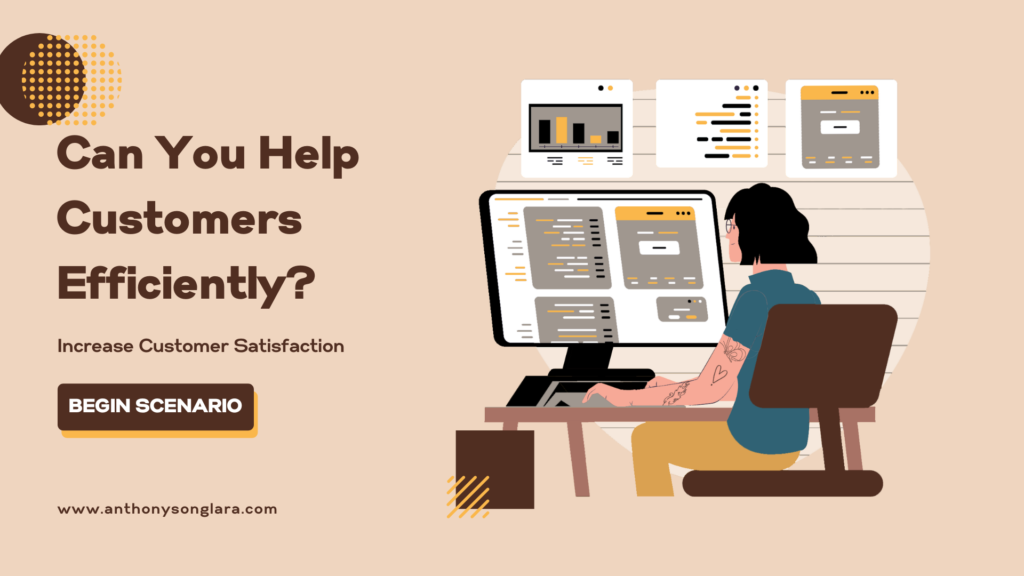
Title Screen.
Process:
First, I met with a friend who currently works at a call center to gather information about the most common scenario CS agents face every day. Then, I created a quick storyboard, designed visual aids, and developed a prototype. After receiving feedback from my friend and some CS representatives, I ended up creating a user-friendly product with Articulate 360.

Storyline.
Design:
Based on conversations with SMEs about the learning curve for Customer Service agents, I found out that most of them have a hard time memorizing refund and return policies. Therefore, I thought about scenario-based learning in which CS reps. face a real-life situation that allows them to critically think to make a decision that satisfies the client considering the company’s regulations.
Thus, I created a chat simulator with multiple-choice questions that challenge the user to make the best decision for the client and the company. Also, the activities include immediate feedback and hints to guide the users through the process.
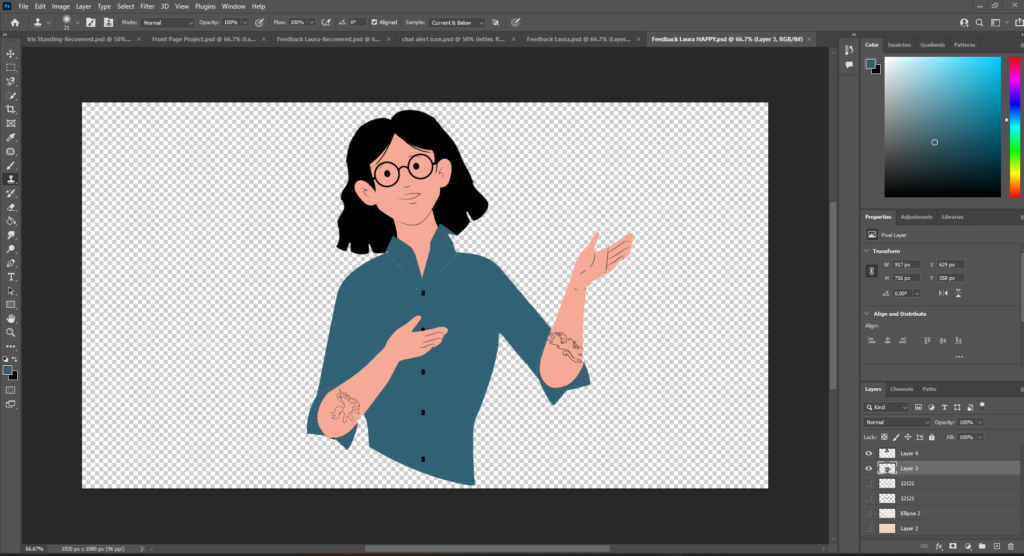
Photoshop.
Visual Mockups:
After finishing the storyboard, I started to develop visual aids in Adobe XD to get direction and a clear perspective on how the project would be. This process helped me make significant multimedia decisions, such as utilizing the characterization principle to gain the audience’s attention and establish a connection with the user. I decided to design a professional chat simulator to make the experience user-friendly; thus, I used the personalization principle to give eLearning a more conversational tone.
Also, I used a colour theme of pink, brown, black, orange and white to keep an aesthetic look throughout the material. I used Adobe Photoshop to customize Iris (the main character) during this design process.
Moreover, I edited the buttons and their hover state to be consistent with my colour theme. Using Adobe XD was highly important as I could move quickly in Articulate Storyline and then concentrate only on the workflow, layers, triggers, animations, etc.
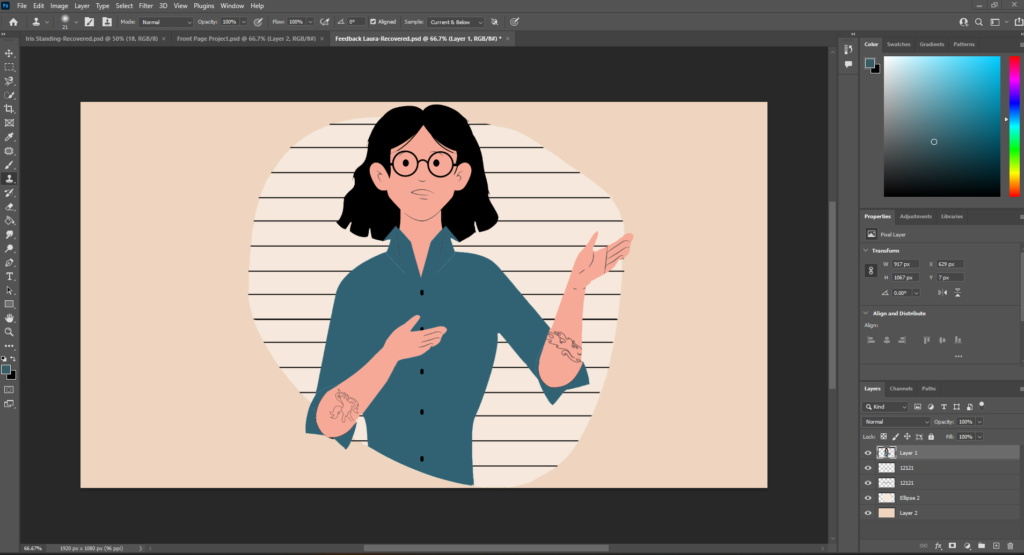
Photoshop.

Photoshop.
Meet Iris:
Implementing The Characterization Principle from the Instructional Design pillars, Iris will guide the participants throughout the eLearning experience to help them understand the material, provide valuable feedback, and develop a strong connection between the learner and the learning experience.
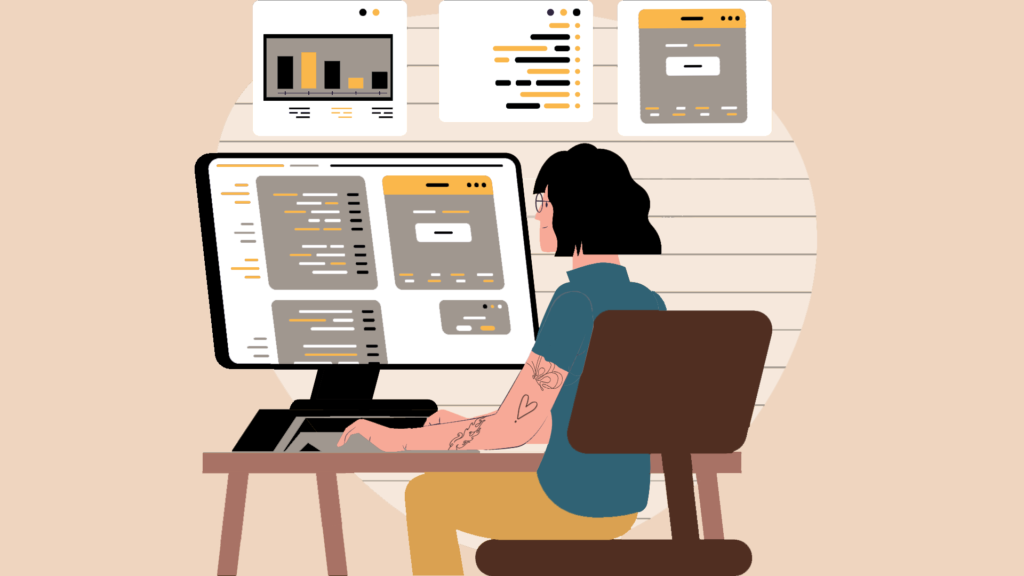
Photoshop.
Full Development:
Finally, after refining motion paths and triggers in the prototype, I successfully finished the eLearning experience. Following this process in such order allowed me to ensure the learning outcomes aligned with the final version of the product.
Reflection:
Iris’s journey has been a successful e-learning experience based on the feedback I received from SMEs due to its engaging storyline and intuitive design.
The development of this eLearning project was very satisfying because I was once a Customer Service agent and I faced the exact challenges.
Also, I enjoyed using Adobe Photoshop to design the main character of the learning experience and apply the characterization principle to make the content entertaining.
Finally, I learnt that telling stories while learning is a fantastic technique that makes a huge impact on better process policies, regulations and content.
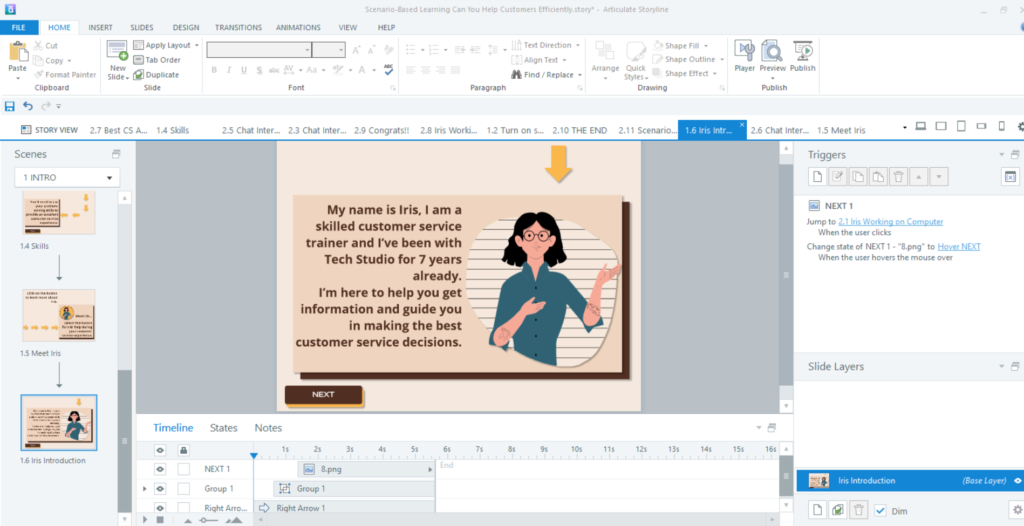
Storyline.
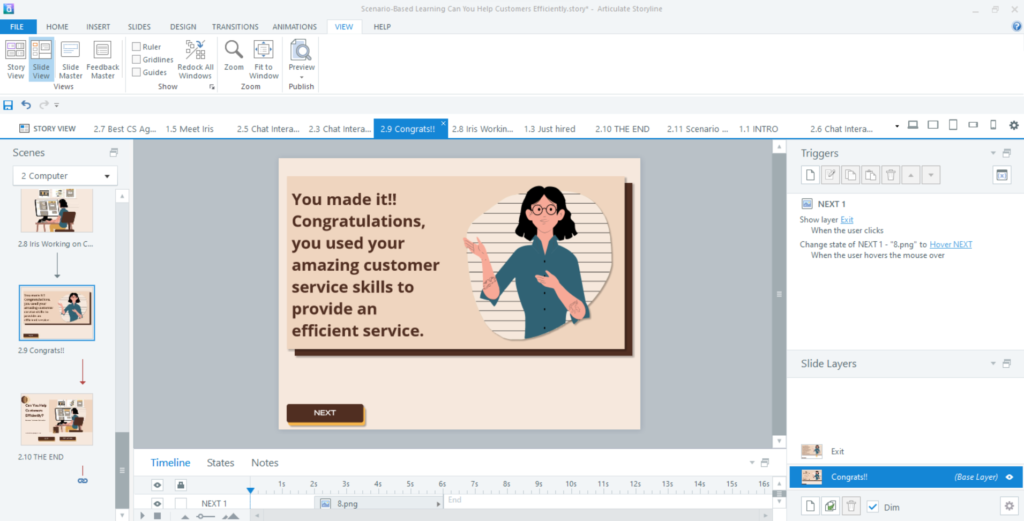
Storyline.
Overview:
I have a vast experience in customer service and technical support. When I landed my first CS job, it was a bit challenging for me to fully understand the company’s policy and transform an uncomfortable scenario into a positive experience for the client. It was not until I handled real-life cases that my customer service skills reached a proficient level, making me wonder what the story would have been if I had a little help from a scenario-based eLearning experience.
Thus, now that I have valuable knowledge in Instructional Design and multimedia principles, I imagined an eLearning solution for customer service specialists to understand realistic work situations through a dynamic, engaging and professional eLearning experience.

Title Screen.
Process:
First, I met with a friend who currently works at a call center to gather information about the most common scenario CS agents face every day. Then, I created a quick storyboard, designed visual aids, and developed a prototype. After receiving feedback from my friend and some CS representatives, I ended up creating a user-friendly product with Articulate 360.

Storyline.
Design:
Based on conversations with SMEs about the learning curve for Customer Service agents, I found out that most of them have a hard time memorizing refund and return policies. Therefore, I thought about scenario-based learning in which CS reps. face a real-life situation that allows them to critically think to make a decision that satisfies the client considering the company’s regulations.
Thus, I created a chat simulator with multiple-choice questions that challenge the user to make the best decision for the client and the company. Also, the activities include immediate feedback and hints to guide the users through the process.

Photoshop.
Visual Mockups:
After finishing the storyboard, I started to develop visual aids in Adobe XD to get direction and a clear perspective on how the project would be. This process helped me make significant multimedia decisions, such as utilizing the characterization principle to gain the audience’s attention and establish a connection with the user. I decided to design a professional chat simulator to make the experience user-friendly; thus, I used the personalization principle to give eLearning a more conversational tone.
Also, I used a colour theme of pink, brown, black, orange and white to keep an aesthetic look throughout the material. I used Adobe Photoshop to customize Iris (the main character) during this design process.
Moreover, I edited the buttons and their hover state to be consistent with my colour theme. Using Adobe XD was highly important as I could move quickly in Articulate Storyline and then concentrate only on the workflow, layers, triggers, animations, etc.

Photoshop.

Photoshop.
Meet Iris:
Implementing The Characterization Principle from the Instructional Design pillars, Iris will guide the participants throughout the eLearning experience to help them understand the material, provide valuable feedback, and develop a strong connection between the learner and the learning experience.

Photoshop.
Full Development:
Finally, after refining motion paths and triggers in the prototype, I successfully finished the eLearning experience. Following this process in such order allowed me to ensure the learning outcomes aligned with the final version of the product.
Reflection:
Iris’s journey has been a successful e-learning experience based on the feedback I received from SMEs due to its engaging storyline and intuitive design.
The development of this eLearning project was very satisfying because I was once a Customer Service agent and I faced the exact challenges.
Also, I enjoyed using Adobe Photoshop to design the main character of the learning experience and apply the characterization principle to make the content entertaining.
Finally, I learnt that telling stories while learning is a fantastic technique that makes a huge impact on better process policies, regulations and content.

Storyline.



